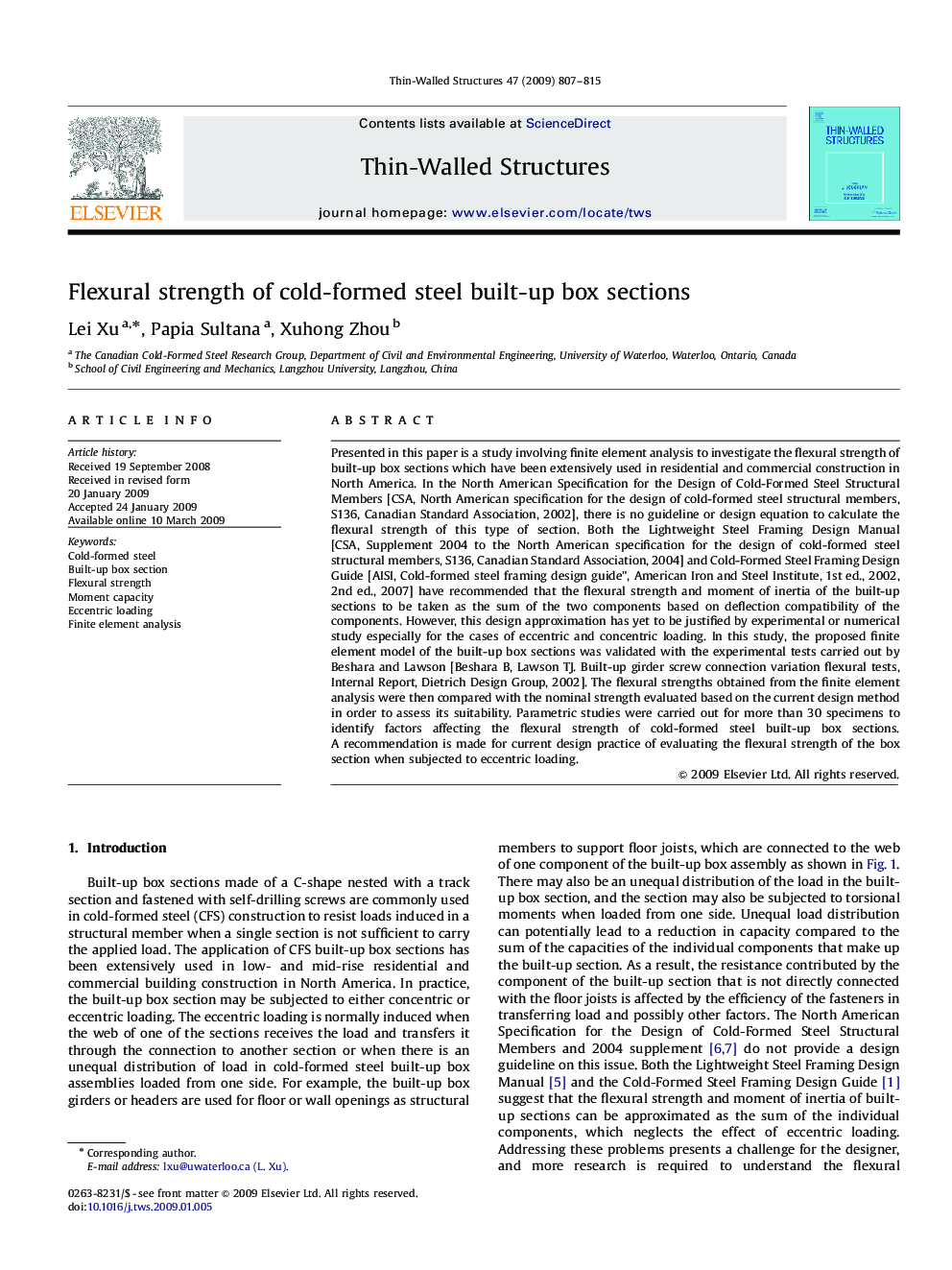| Article ID | Journal | Published Year | Pages | File Type |
|---|---|---|---|---|
| 309689 | Thin-Walled Structures | 2009 | 9 Pages |
Presented in this paper is a study involving finite element analysis to investigate the flexural strength of built-up box sections which have been extensively used in residential and commercial construction in North America. In the North American Specification for the Design of Cold-Formed Steel Structural Members [CSA, North American specification for the design of cold-formed steel structural members, S136, Canadian Standard Association, 2002], there is no guideline or design equation to calculate the flexural strength of this type of section. Both the Lightweight Steel Framing Design Manual [CSA, Supplement 2004 to the North American specification for the design of cold-formed steel structural members, S136, Canadian Standard Association, 2004] and Cold-Formed Steel Framing Design Guide [AISI, Cold-formed steel framing design guide", American Iron and Steel Institute, 1st ed., 2002, 2nd ed., 2007] have recommended that the flexural strength and moment of inertia of the built-up sections to be taken as the sum of the two components based on deflection compatibility of the components. However, this design approximation has yet to be justified by experimental or numerical study especially for the cases of eccentric and concentric loading. In this study, the proposed finite element model of the built-up box sections was validated with the experimental tests carried out by Beshara and Lawson [Beshara B, Lawson TJ. Built-up girder screw connection variation flexural tests, Internal Report, Dietrich Design Group, 2002]. The flexural strengths obtained from the finite element analysis were then compared with the nominal strength evaluated based on the current design method in order to assess its suitability. Parametric studies were carried out for more than 30 specimens to identify factors affecting the flexural strength of cold-formed steel built-up box sections. A recommendation is made for current design practice of evaluating the flexural strength of the box section when subjected to eccentric loading.
